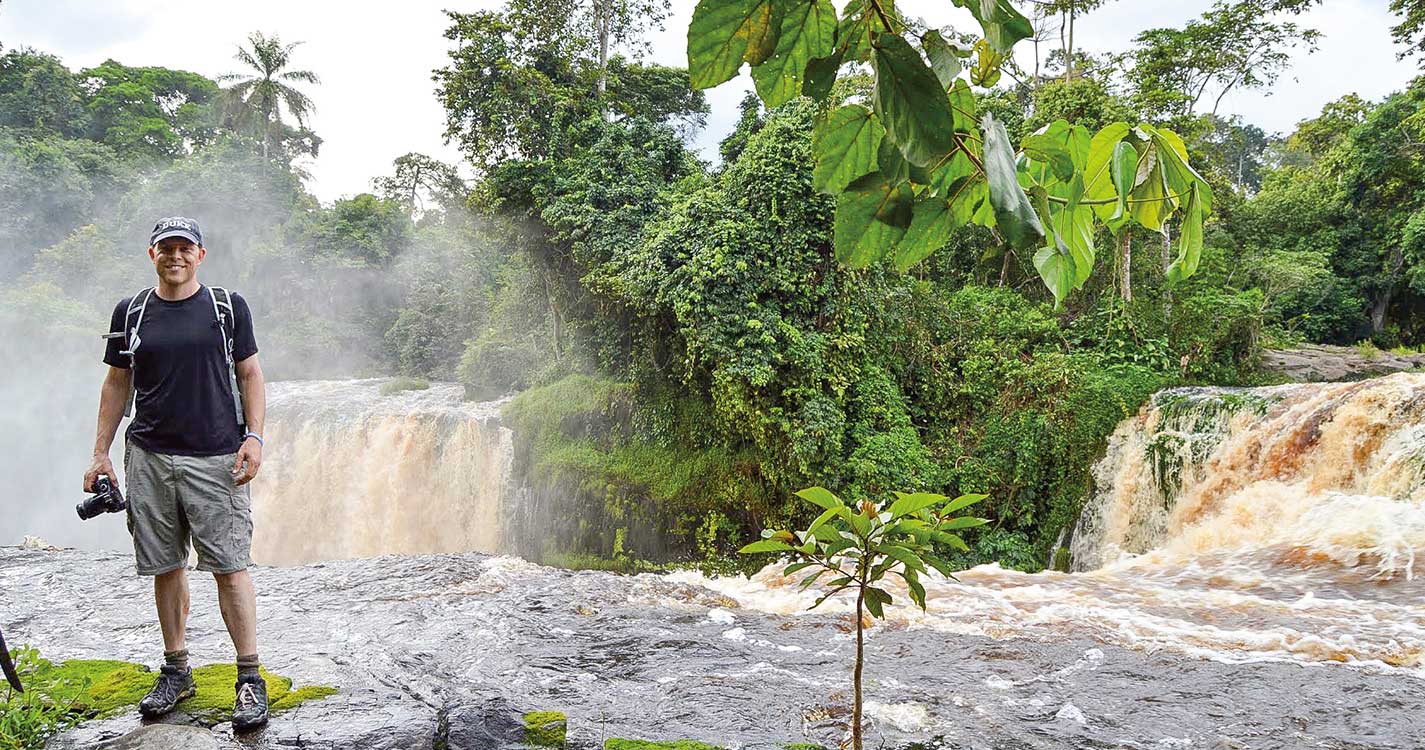Poachers have long killed elephants for their ivory, but no one knew the staggering toll on one of Africa’s largest elephant sanctuaries until John Poulsen ’94 investigated.
Poulsen is a Duke University professor who specializes in tropical forest research. He and his wife, Connie Clark ’94, also a Duke researcher, have a soft spot for Africa, as they both served in the Peace Corps there and later made the continent their off-and-on residence.
Elephants were not the original focus of Poulsen’s research, but as the poaching crisis grew, so did his interest in their conservation. In 2011, he began to hear worrying reports about poaching in Minkèbè National Park in northeast Gabon, home to nearly half of Central Africa’s 100,000 forest elephants. Though smaller and darker than their famous counterpart, the bush elephant, these animals are no less prized for their ivory.
When he and other Duke researchers took a census, mainly by tracking elephant dung, they discovered that over a decade, the park had lost about 25,000 elephants.
Many poachers slipped over the border from neighboring Cameroon, where the city of Douala is a major hub of the international ivory trade.
“Elephant numbers in the south of the park, which is 58 kilometers from the nearest major Gabonese road, have been somewhat reduced,” Poulsen says. “By comparison, the central and northern parts of the park — which, at one point, are just 6.1 kilometers from Cameroon’s national road — have been emptied.”
For the very poor people involved in the illegal ivory trade, Poulsen explains, tusks can mean “thousands, even hundreds of thousands of dollars.”
With corrupt officials sometimes involved in the lucrative business, governments often find it difficult to prevent poaching. Plus, today’s poachers are often ruthless and equipped with sophisticated, military-grade weapons and other technology.
After Poulsen’s research was published in scientific magazines and national news media earlier this year, the Gabonese government and the country’s park agency sent a military brigade into Minkèbè to force out poachers. The park agency placed satellite collars on more than four dozen elephants to gain a sense of the animals’ range, movement and the best ways to protect them from poachers. Poulsen and other Duke researchers are also experimenting with drones to collect even more accurate data.
In a separate but also promising development, the Chinese government announced it will halt domestic trade of ivory by the end of this year. With China representing the world’s largest market for ivory, the move offers some good news for elephant conservationists.
Still, as Poulsen says, “The dramatic decline in the elephant population of a remote national park that once held the highest density of forest elephants in the world demonstrates that no place is safe from poachers.”
This article was originally published in the fall 2017 issue of Willamette magazine.

